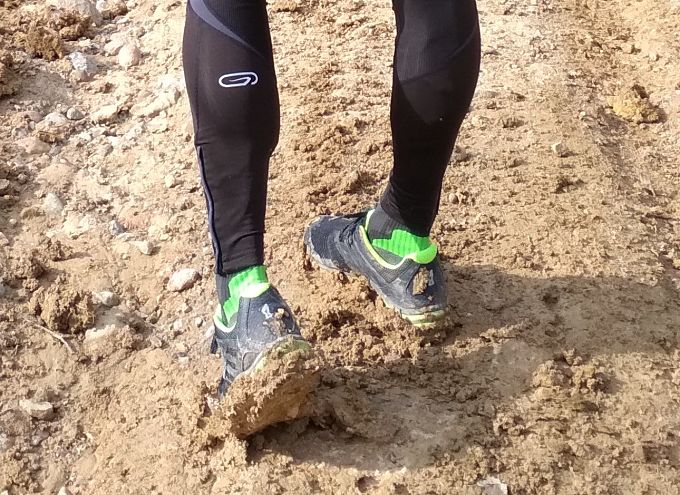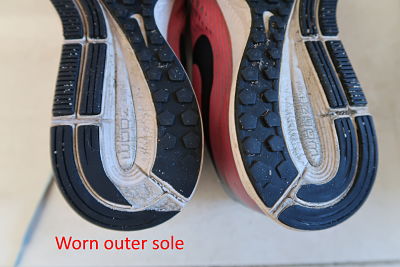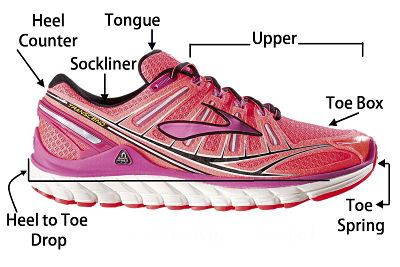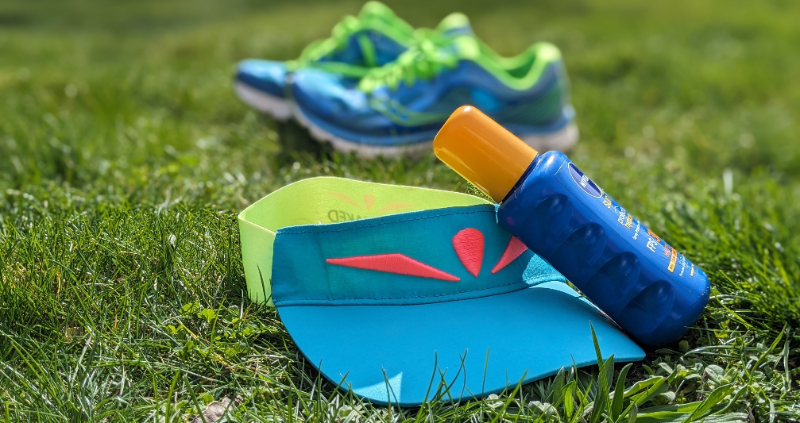Choosing Running Shoes
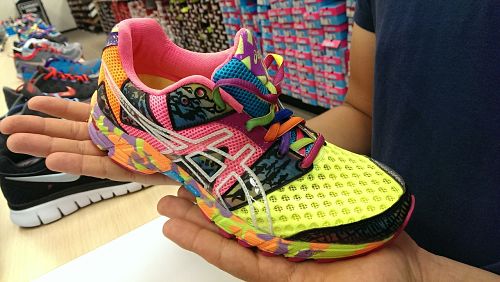
I find choosing running shoes a bit scary (and kind of exciting). I get a real buzz when entering a running store but that then often turns to panic when I see how many trainers there are. What does a girl choose?!
My first ever running shoes were Asics (I've forgotten which model) and I bought them because they fitted my meager budget and I liked the color. No other factors entered into my head.
Nowadays choosing running shoes has become a minefield of confusion. Do you go for comfort, speed, heel to toe drop, weight, minimalist, price, color and so on? Aagh.
Your running shoes might well end up being the most expensive shoes you own so pick wisely.
----- Choosing Running Shoes -----
Types of Running Shoes
Apart from the different bits that go into making up a running shoe, see here for running shoe terms, you then have different types of running shoes for training, racing, comfort, stability, the types of terrain you'll be on and so on.
The main shoes that you will come across are:
Neutral Running Shoes
Neutral shoes are for those who do not have any issues with excessive pronation and have normal to high arches. They have just the right amount of midsole cushioning and medial support to allow your feet to take their natural position.
You may also see cushioned neutral shoes which are often recommended for people who underpronate.
Stability Running Shoes
Stability running shoes have extra support and midsole cushioning and are theoretically for those who might overpronate a little and/or have normal to low arches.
Motion Control Running Shoes
Motion control shoes are designed for runners who severely overpronate. They tend to have a stiffer heel and a very firm midsole with added support under the arch. These extra features tend to make the shoe heavier than stability or neutral shoes.
Racing Flats
Racing flats are designed for you to go faster when racing or doing interval workouts on the track or road. They are lighter and less cushioned than regular training shoes and the heel to toe drop tends to be lower, often under 4mm.
Trail Shoes
Trail shoes are designed for the off road runner. They are heavier and more rugged than an ordinary trainer with the aim of protecting the foot and ankle when you are running over uneven ground. The outer soles tend to have more aggressive tread patterns and the mesh uppers are often waterproof and thicker.
----- Choosing Running Shoes -----
Running Shoes and Pronation
Everyone pronates. As you walk or run, your foot usually rolls inwards and your foot arch flattens slightly. This helps to provide a sort of shock absorption to the foot.
Overpronation
Overpronation is when the foot rolls in too much when walking or running.
Underpronation (supination)
If you underpronate, then your foot tends to roll outwards past the norm, during the normal walking/running phase.
Neutral Pronation
With neutral pronation, your foot moves within what is considered the normal range.
If all that sounds really complicated, watch the video below. More and more research is showing that in fact, pronation correcting shoes are not necessarily the right thing to buy.
----- Choosing Running Shoes -----
Choosing Running Shoes - How to Pick the Best Running Shoes?
By now you can see that running shoes tend to focus on pronation, stability and cushioning but which is the BEST running shoe?
There really is no BEST running shoe.
The best running shoe for you is the shoe that is comfortable, fits well and is suitable for the terrain and distances that you run. To help you narrow down the huge choice, this is what I suggest.....
My Tips for choosing running shoes:
- When first choosing running shoes, don't buy them online unless you have tried them already in the shop and so know that they are comfy and that they fit you.
- Before going to the running store, do an internet search of the shoes that you might be interested in. Make a list of 4 or 5 running shoes to try.
- For me, the weight of the shoe and the heel to toe drop are really important. I have a small build and so try and go for the lightest shoes I can although that sometimes means less cushioning. I also find that if the heel drop is below 6mm then I am more likely to get Achilles problems. Bigger and heavier people can go for heavier shoes with more cushioning.
- Buy running shoes in one or one and a half sizes bigger than your normal everyday shoes. Your feet will swell when you run and your toes need room to move otherwise you'll get black toenails. I take a 37 (eu size) but my running shoes are 39 (eu size).
- Walk or jog around the shop with your shoes on. They should feel comfortable right out of the box. If anything feels tight, especially around the toes, consider trying a bigger size or a different shoe.
- As running shoes are expensive, I try and buy them in the sales, although you can guarantee that they won't have my size. Another tip is to try them in the shop then check out the shops website. Often the same shop you went to will have a better deal online.
- If your feet are not the same size (like mine), choose your shoe size based on the bigger foot.
- If you can (budget permitting), consider having 2 pairs of running shoes. If you let your feet only get used to one type of trainer, then when you buy another style several months later, your feet will take longer to adapt. I have a more cushioned, heavier pair for most training days, a lighter pair for racing and fast workouts and a trail pair for days when we head into the woods or fields.
- When you get your new shoes home, although they should be comfortable straight out of the box, wear them for short periods only for the firs couple of weeks so that your feet and body gets used to them.
- If this is your fist pair of running shoes, be prepared to look after them well and get to know the signs of when to replace your running shoes.
